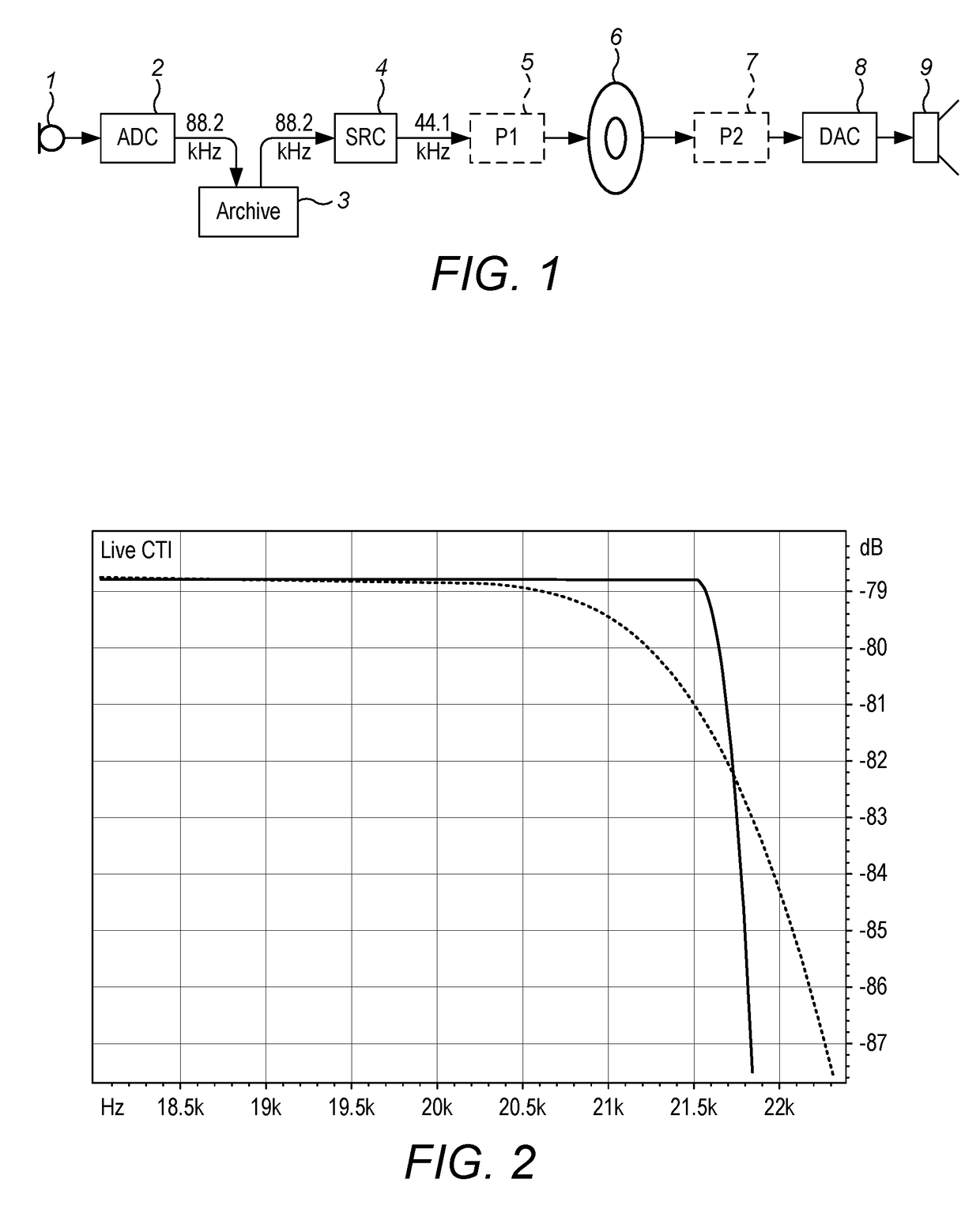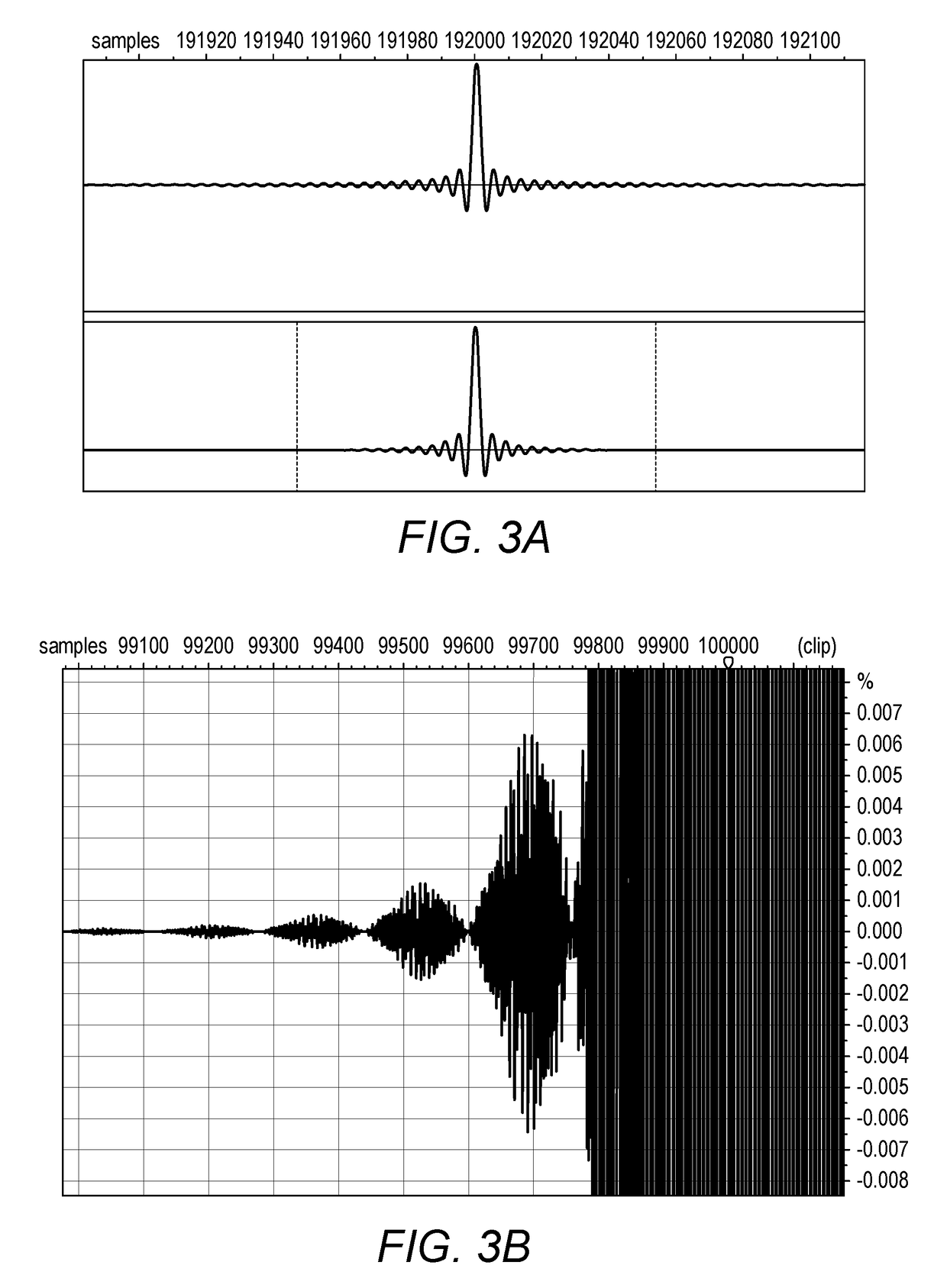Non linear filter with group delay at pre-response frequency for high res radio
- Summary
- Abstract
- Description
- Claims
- Application Information
AI Technical Summary
Benefits of technology
Problems solved by technology
Method used
Image
Examples
Embodiment Construction
[0051]FIG. 1 shows an example recording and reproduction chain in which a sound is captured by a microphone 1, converted to digital form by an analogue-to-digital-converter (ADC) 2 and the resulting signal stored in an archive 3. At some later time the signal is retrieved from the archive and may pass through a sample rate converter (SRC) 4 and further processing (P1) 5 before being distributed 6 to listeners either via a physical medium such as Compact Disc (CD) or by an intangible medium such as radio broadcasting or Internet transmission.
[0052]The listener's equipment 7, 8, 9 includes a digital to analogue converter (DAC) 8 and a transducer 9 such as a headphone or loudspeaker, and optionally further processing (P2) 7.
[0053]As will be described later, processing according to the invention may be provided either as P1 in the mastering equipment 5 or as P2 in the listener's receiving equipment 7. In both cases, pre-rings generated by the ADC2 or the SRC 4 or by the listener's DAC 8...
PUM
 Login to View More
Login to View More Abstract
Description
Claims
Application Information
 Login to View More
Login to View More - R&D
- Intellectual Property
- Life Sciences
- Materials
- Tech Scout
- Unparalleled Data Quality
- Higher Quality Content
- 60% Fewer Hallucinations
Browse by: Latest US Patents, China's latest patents, Technical Efficacy Thesaurus, Application Domain, Technology Topic, Popular Technical Reports.
© 2025 PatSnap. All rights reserved.Legal|Privacy policy|Modern Slavery Act Transparency Statement|Sitemap|About US| Contact US: help@patsnap.com



